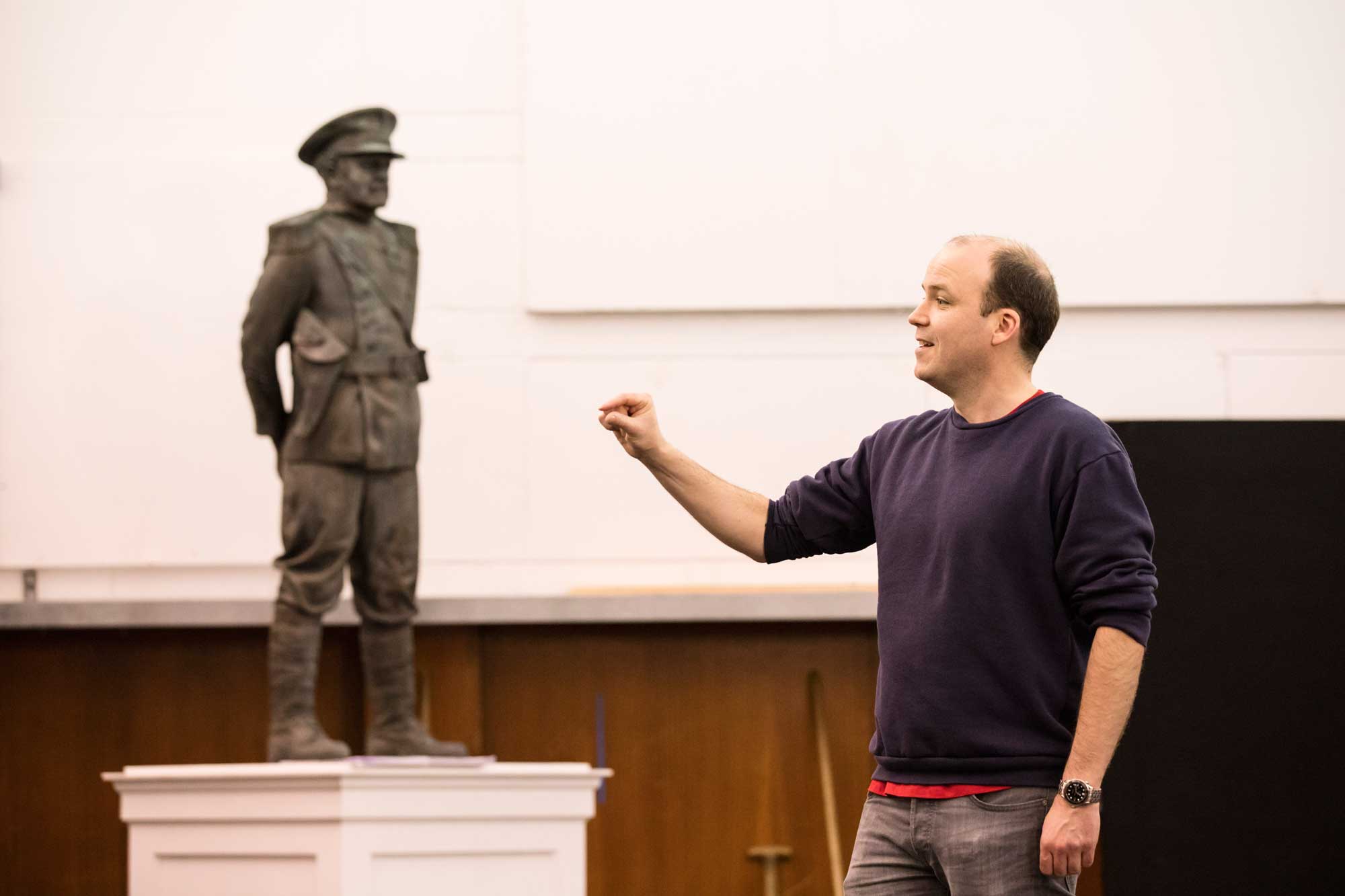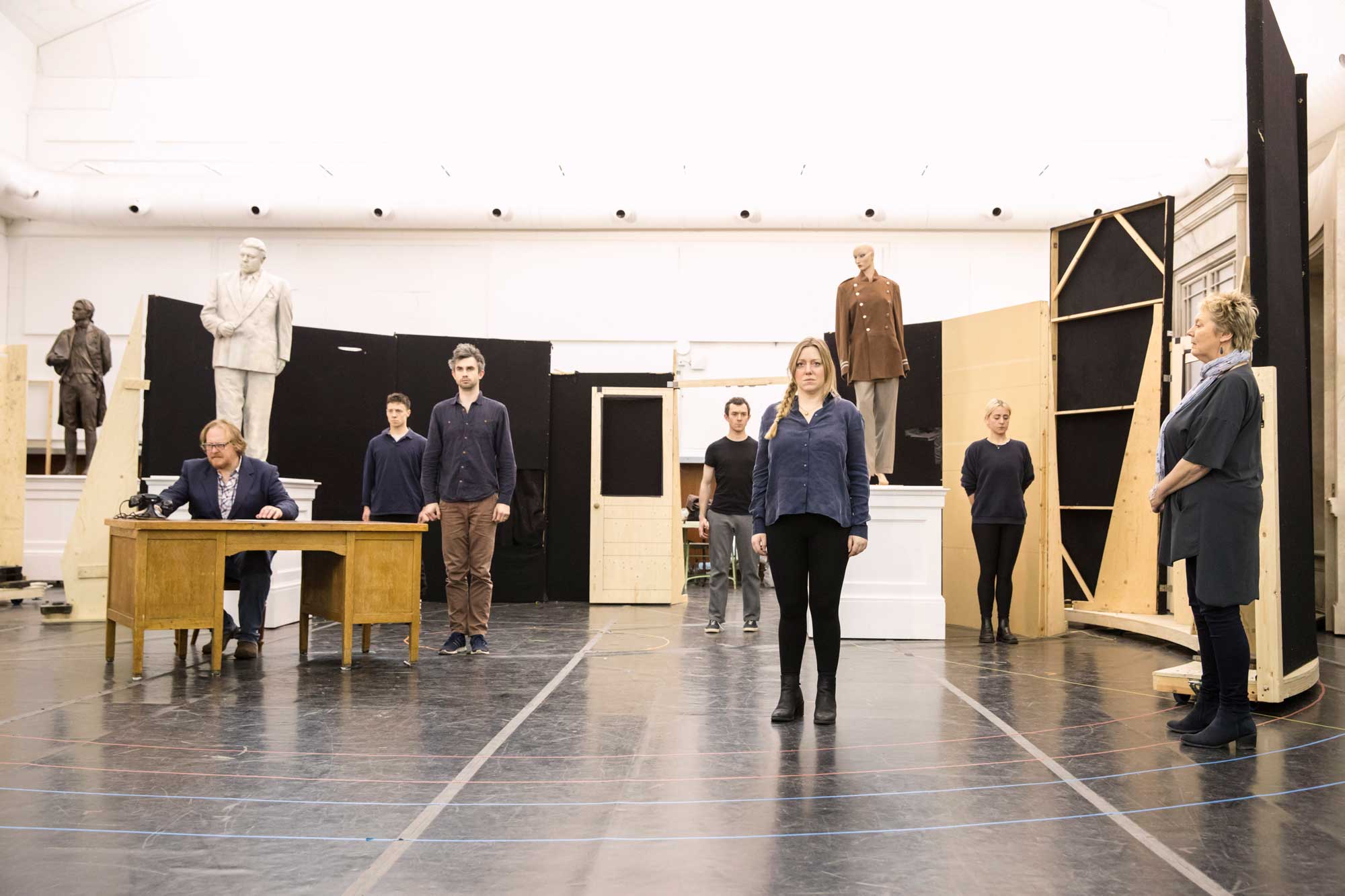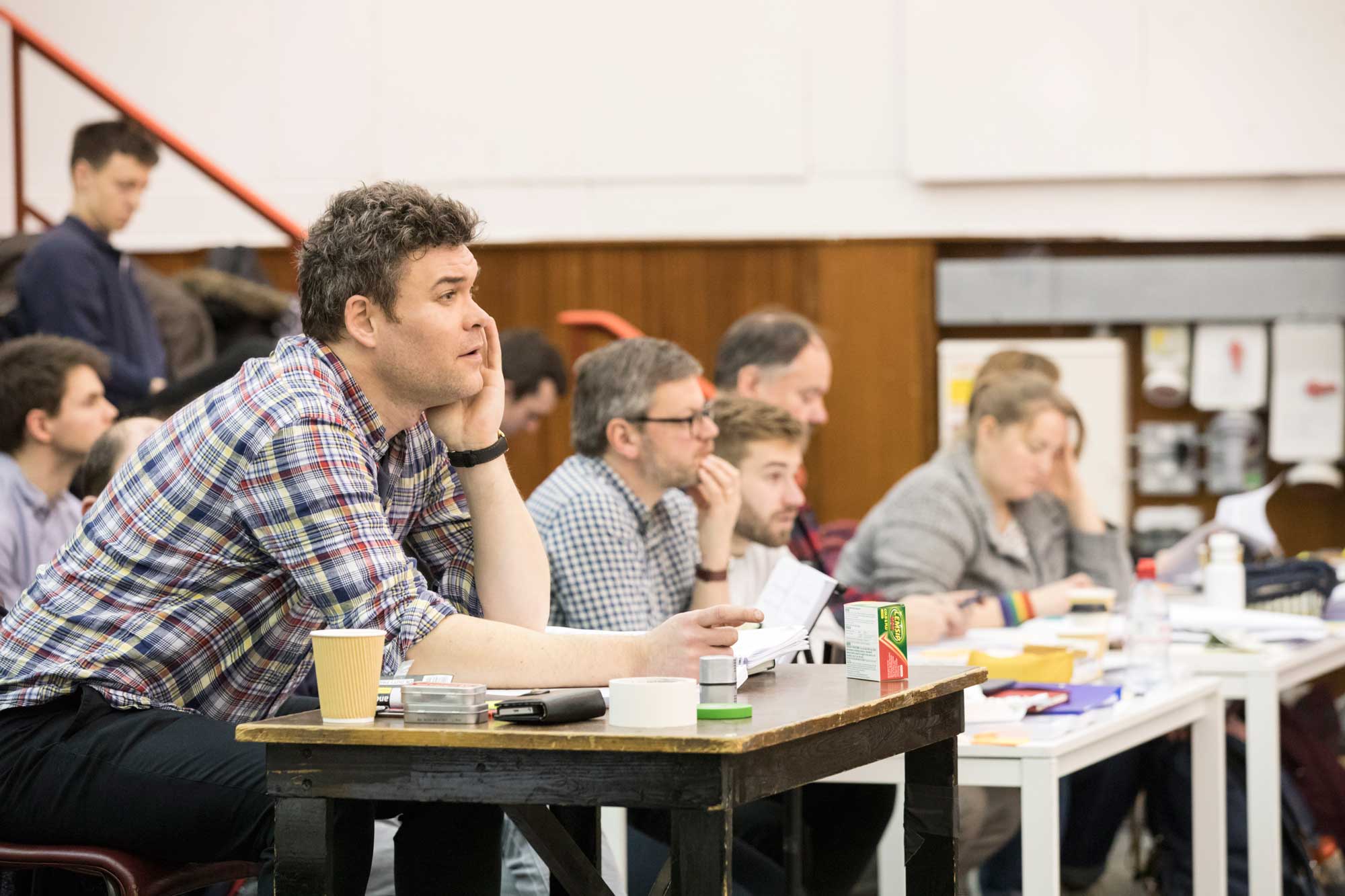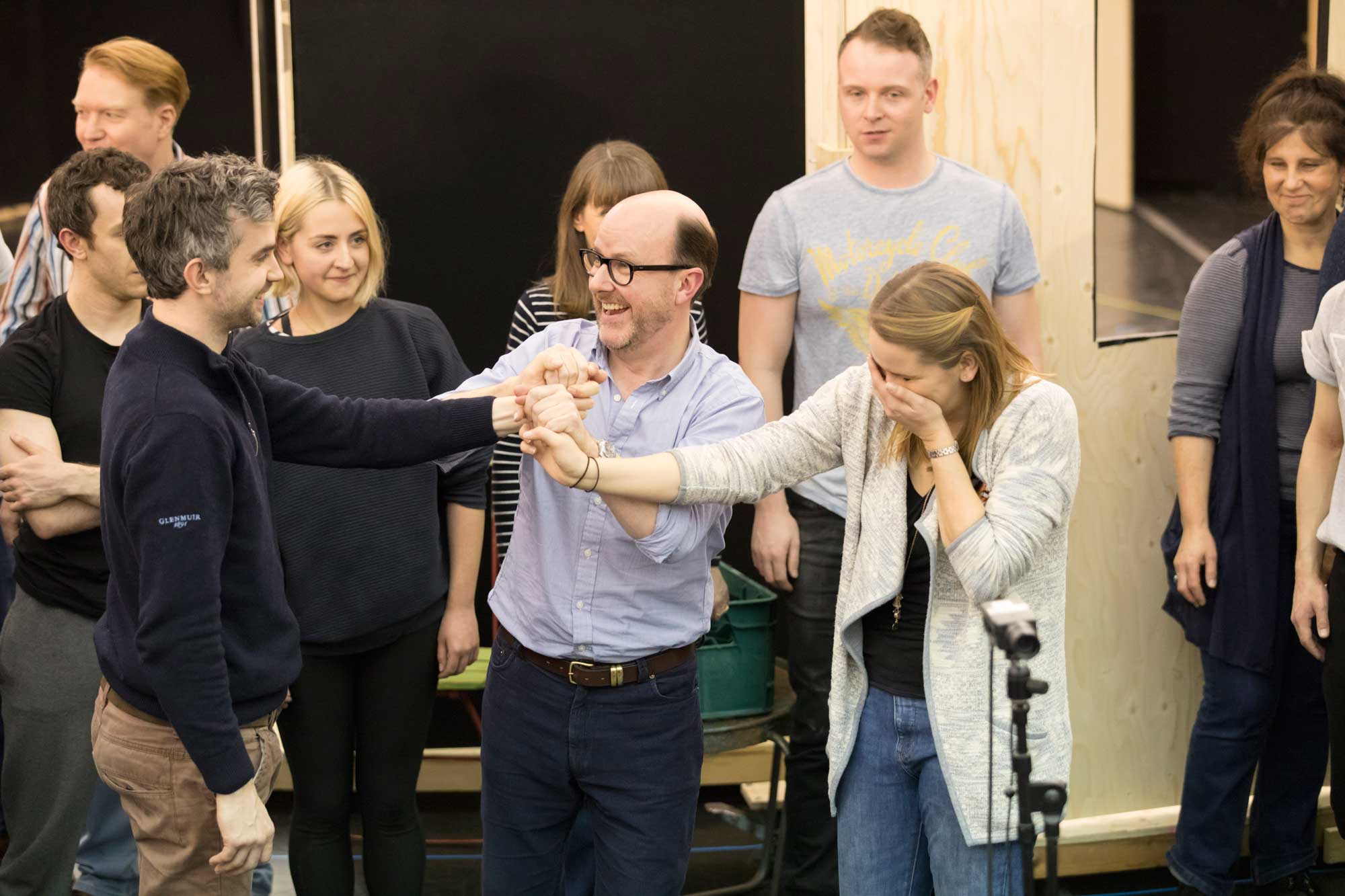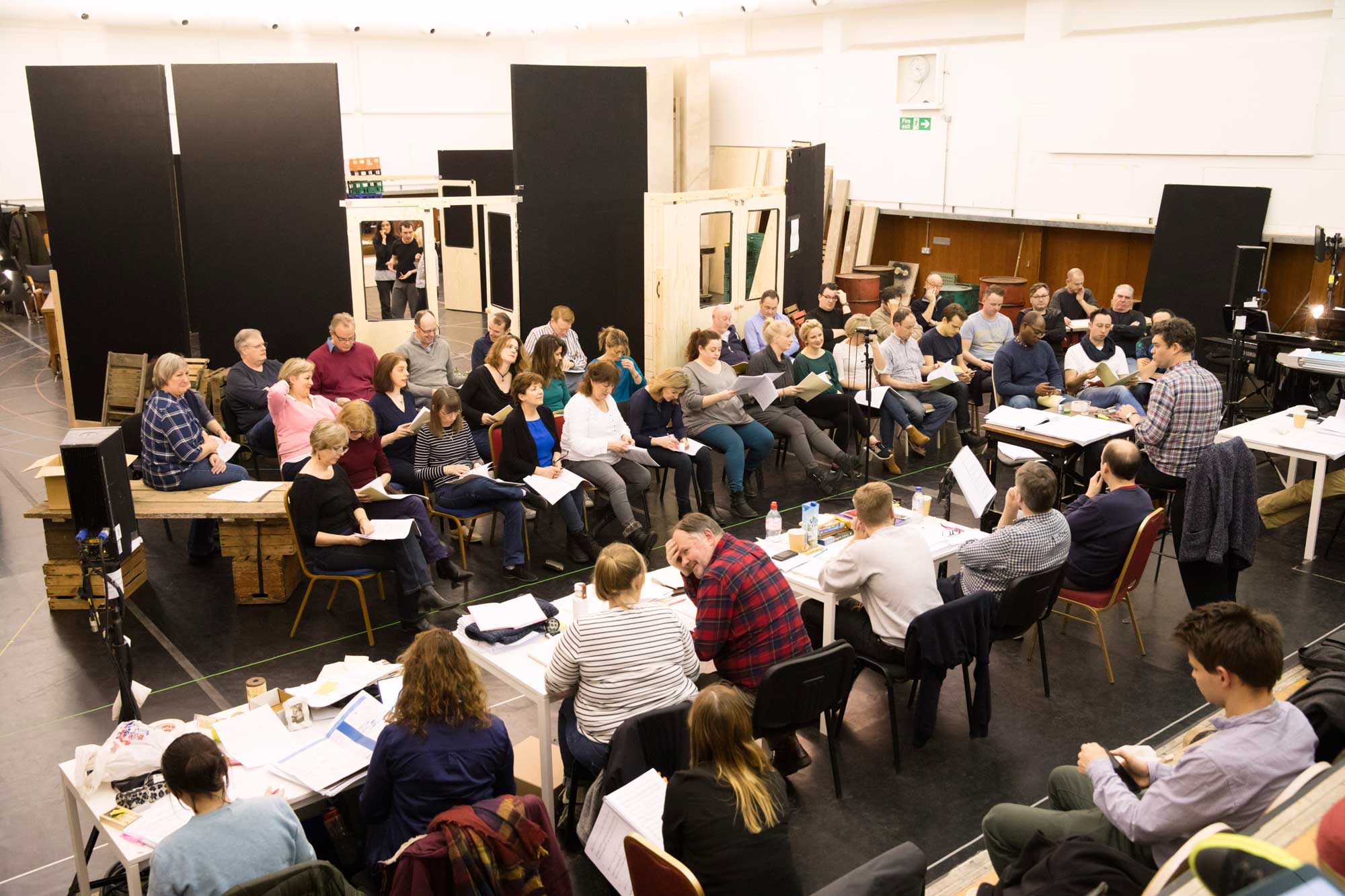Creative choices
The opera presents a world in which humans aim to take control but where the forces of nature dominate. Kinnear wished to expose relationships between the characters onstage as entirely subservient to a natural world; water, fire, storms, flowers all have as much impact on the opera’s narrative as the actions of the characters. In the play, there is a famous stage direction that Antigonus is ‘pursued off-stage by a bear’. The bear signals the play’s shift to the outside, rural world of Bohemia. In this production the bear is instead represented by the constellation of Ursa Major in the night sky, reinforcing the cycles of day and night which govern the earth.
Another creative choice made by Kinnear and Wigglesworth was to write the character of Mamillius (the son of Leontes and Hermione) as a silent role performed by a young actor. Mamillius’ role has been extended to become the storyteller, existing both inside and outside the play’s narrative.
Find out more from Ryan Wigglesworth and cast members Iain Paterson, Sophie Bevan and Leigh Melrose about rehearsing The Winter’s Tale:
